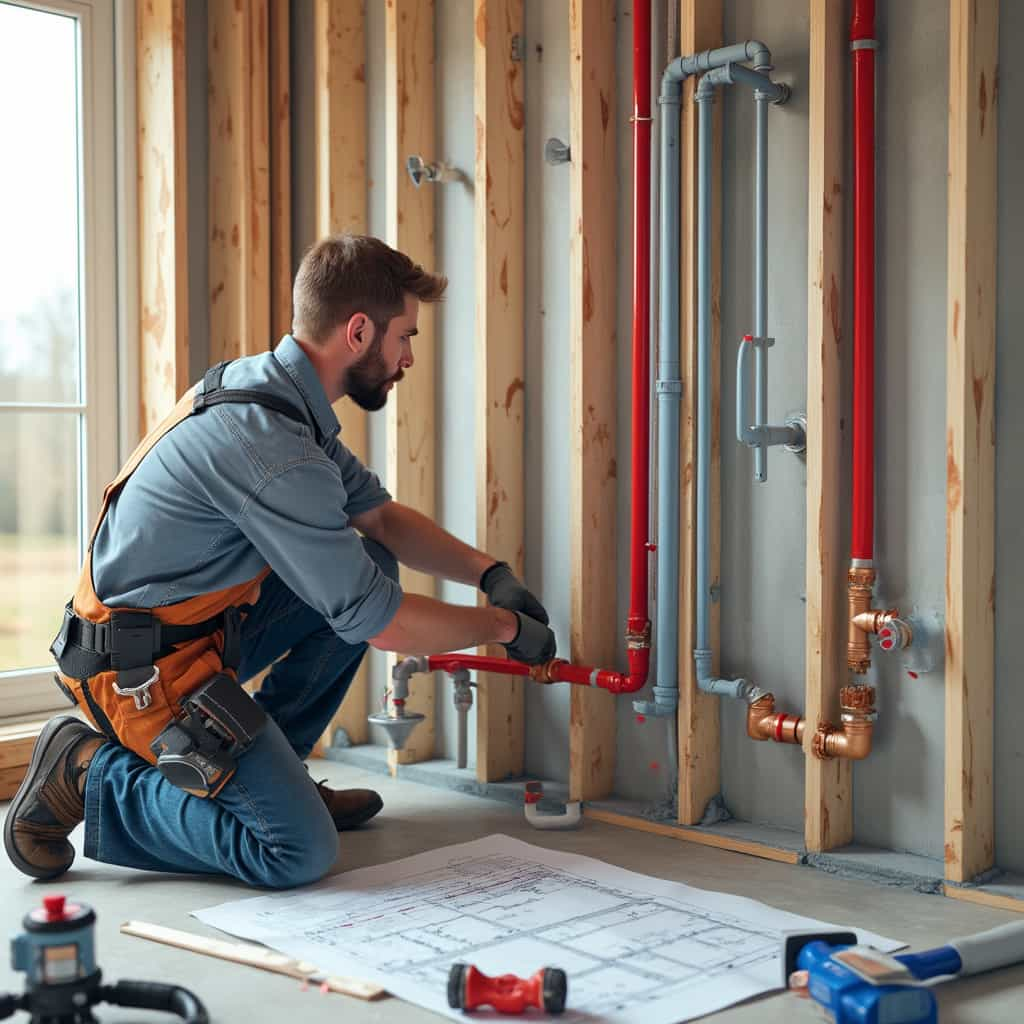As homeowners contemplate the intricacies of plumbing installations, several challenges and questions arise, particularly regarding cost and efficiency. Whether establishing a new home or renovating an existing one, plumbing is the lifeline that supports utilities that are fundamental to daily living. A thoughtful approach to plumbing installations can prevent a myriad of future issues, making it a worthwhile investment right from the start.
A fundamental aspect of plumbing installation lies in understanding the various types available. Broadly, homeowners often encounter options like copper, CPVC (chlorinated polyvinyl chloride), and PEX (cross-linked polyethylene) piping. Each has unique advantages and disadvantages concerning costs, durability, and maintenance. Copper piping, for instance, is traditionally lauded for its durability and resistance to bacteria. However, it is notably more expensive and can become challenging to install in tight spaces due to its rigidity.
In contrast, PEX piping offers flexibility, ease of installation, and cost-effectiveness. Its ability to expand and contract makes it resistant to freezing temperatures and cracking, a common concern for homeowners in colder climates. On the downside, PEX cannot be recycled, raising environmental concerns. CPVC piping falls in between, offering a good level of durability at a moderate price. However, it can become brittle over time when exposed to direct sunlight.
Taking a historical perspective, plumbing has evolved significantly. Ancient Romans, for example, installed complex aqueduct systems to supply water to urban centers. The sophistication of such systems often astounds modern audiences, considering their reliance on gravity alone. These aqueducts utilized lead pipes, which although effective at the time, later revealed health hazards due to lead poisoning. This serves as a crucial reminder of the importance of safe materials in modern plumbing.
Modern plumbing must also adhere to rigorous safety standards and building codes, which means homeowners should ensure that the infrastructure complies with local regulations. This often necessitates engaging certified professionals who can provide guarantees on workmanship and adherence to code. According to the International Plumbing Code, aspects such as backflow prevention and drainage slope angles are critical in safeguarding public health.
Cost considerations often top the list for homeowners. Current estimates from plumbing experts suggest that installations can range from $1,500 to $15,000, depending on the scope, materials, and complexity of the system. Rough-in plumbing, which includes the installation of vent stacks, sewer lines, and water supply lines, often constitutes the bulk of the expenses. Unfortunately, cost underestimations are common pitfalls that can lead to budget overruns.
An efficient way to navigate these financial hurdles is by obtaining multiple quotes from licensed plumbers. This variety not only provides a broad spectrum of price points but also insight into different methodologies that might be more suitable or economical. It is also wise to check references and research any history of complaints with industry regulators such as the Better Business Bureau.
Among notable cost-saving strategies is the consideration of plumbing layout optimization. Experts suggest that shortening the distance between plumbing fixtures can significantly reduce material costs and potential pressure drops within the system. For instance, grouping kitchens and bathrooms back-to-back allows them to share water and waste lines, a technique that can reduce installation complexity and cost.
Moreover, smart home technology has made significant inroads into plumbing solutions. Water-efficient fixtures like low-flow toilets and faucets not only reduce water consumption but also cut down utility bills. Some advanced systems can detect leaks automatically and send alerts, preventing waste and potential water damage. These innovative approaches highlight a shift towards sustainable living, which is increasingly attractive to environmentally conscious consumers.
While navigating these numerous options and considerations, expert opinions can be invaluable. John Smith, a seasoned plumber from New York, argues that while initial investment in quality materials and skilled labor can be costly, it typically pays off through longevity and reduced maintenance needs over time. ‘You might save a bit now with cheaper options,’ he says, ‘but in plumbing, quality ensures peace of mind and fewer emergency repairs down the road.’
In conclusion, choosing the right plumbing installation for your home demands a balance of cost assessment, material selection, and an evaluative understanding of your unique living circumstances. As dynamics such as climate, building age, and water quality impact decisions, the choice must be made with foresight and knowledge. Armed with the right information, homeowners can confidently secure the best deal while ensuring a durable and reliable plumbing system that meets both present and future needs.
You may also like
Buy a Suburban Detached Home: Opportunities, Costs and Considerations
As urban living becomes increasingly expensive, many prospective homeowners are looking toward suburban areas for more affordable housing options. This article explores the advantages and challenges of purchasing a detached home in the suburbs, compares market options, and provides insights into securing the best deals.
Why buy an apartment in the City Center ?
Purchasing an apartment in the city center involves a myriad of considerations, including financial, practical, and lifestyle factors. This article explores various proposals, compares cost-effective options, and highlights the potential challenges and benefits of city-center real estate acquisition.
Modern Bathtub: Symbols of comfort and style
Bathtubs have evolved from basic sanitary fixtures to luxurious symbols of comfort and style. This article dives into the latest trends, innovations, and models in the bathtub industry, providing insights into the current marketplace and offering recommendations for great value products.
Shower Innovations 2025: Latest Trends and Technologies in the Bathroom
As we venture into 2025, the shower industry is brimming with innovations, from zero-threshold showers to smart technologies. This article delves into the newest models, market trends, and the best price-quality offerings available, along with expert opinions and geographical purchasing trends.
